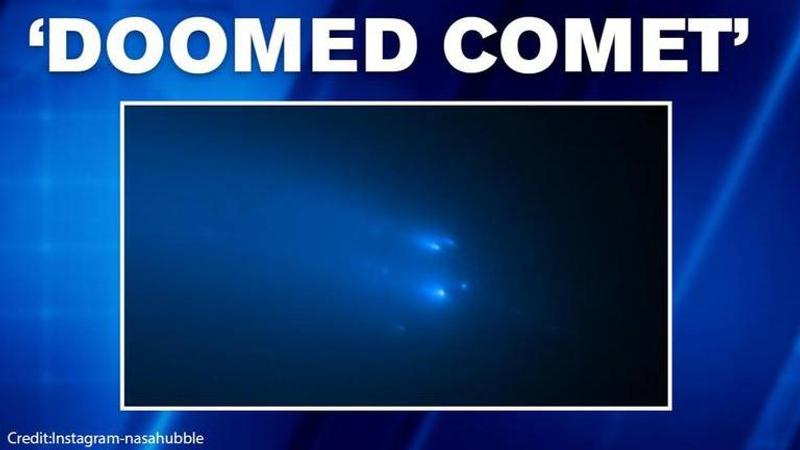Published 01:55 IST, April 30th 2020
NASA's Hubble Telescope captures rare comet disintegration as it bursts into pieces
NASA's Hubble Space Telescope released a video of the ‘doomed comet’ which shows the sharpest views of its solid icy nucleus bursting into 30 pieces.

As NASA has been keeping a close track of the C/2019 Y4 (ATLAS) comet for a while now, on April 28, the US space agency informed that its Hubble Space Telescope was able to capture some of its rare interstellar processes.
While taking to Instagram, NASA Hubble released a video of the ‘doomed comet’ which were taken on April 20 and 23. The space agency informed that the video shows the sharpest views yet of the comet’s solid icy nucleus bursting into as many as 30 pieces.
Take a look at it here:
According to the press note on the NASA website, the comet C/2019 Y4, also known as ATLAS, was first discovered on December 29, 2019. It was discovered by the ATLAS robotic astronomical survey system based in Hawaii and its fragmentation was confirmed by amateur astronomer Jose de Queiroz, who was able to photograph around three pieces of the comet on April 11.
David Jewitt, professor of planetary science and astronomy at UCLA, Los Angeles and leader of one of two teams that photographed the doomed comet with Hubble, said, “Their appearance changes substantially between the two days, so much so that it's quite difficult to connect the dots”.
He added, “I don't know whether this is because the individual pieces are flashing on and off as they reflect sunlight, acting like twinkling lights on a Christmas tree, or because different fragments appear on different days”.
Closest approach to Earth on May 23
As the comet moved towards the inner solar system and got brighter, NASA also anticipates that it might be visible to the naked eye in May; however, the comet is now abruptly starting to get dimmer instead of brighter. The astronomers speculated that the icy core may be fragmenting or disintegrating.
According to the NASA website, when the latest Hubble observations were taken, the disintegrating comet was approximately 146 million kilometres from Earth.
Furthermore, the astronomers also believe that if any of the disintegrated pieces survive, the comet will make its closest approach to Earth on May 23 at a distance of about 116 million kilometres. Moreover, the space agency also anticipates that eight days later the comet will also skirt past the sun at 40 million kilometres.
Even though the comets might fully disintegrate and won’t be visible from Earth, another leader of the Hubble observing team said that the whole observation was ‘really exciting’ because such events are ‘super cool’ to watch and because they do not happen very often. He further added that most comets that fragment are too dim to see; however, such events at such scale only happens once or twice a decade.
Updated 01:55 IST, April 30th 2020



